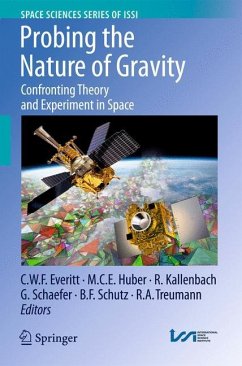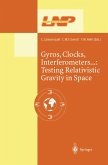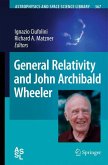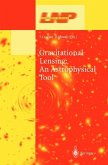This set of articles is the result of an international workshop focused on the various attempts to check the role of General Relativity in Gravity by measurements in space. The book presents all proposals for modification of gravitational theory in one volume.
Observing our Universe and its evolution with ever increasing sensitivity from ground-based or space-borne telescopes is posing great challenges to Fundamental Physics and Astronomy. The remnant cosmic microwave background, as beautifully measured by successive space missions COBE, WMAP, and now PLANCK, provides a unique probe of the very early stages of our Universe. The red-shift of atomic lines in distant galaxies, the dynamics of pulsars, the large scale structure of galaxies, and black holes are a few manifestations of the theory of General Relativity. Yet, today, we understand only 4% of the mass of our Universe, the rest being called dark energy and dark matter, both of unknown origin! A second family of space missions is currently emerging; rather than designing ever more re nedobservationalinstruments,physicistsandengineersseekalsotousethespaceenvironment to perform high-precision tests of the fundamental laws of physics. The technology required for such tests has becomeavailable only over the course of the last decades. Clocks of high accuracy are an example. They are based on advances in atomic and laser physics, such as cold atoms, enabling a new generation of highly sensitive quantum sensors for ground and space experiments. Two experiments in space have now tested Einstein's relativity theory: - Several decades ago, Gravity Probe A con rmed the accuracy of the gravitational red-shift ?5 according to general relativity to a level of 7× 10 [R. F. C. Vessot et al. , Test of Relativistic Gravitation with a Space-Borne Hydrogen Maser, Phys. Rev. Lett. 45, 2081-2084 (1980)].
Observing our Universe and its evolution with ever increasing sensitivity from ground-based or space-borne telescopes is posing great challenges to Fundamental Physics and Astronomy. The remnant cosmic microwave background, as beautifully measured by successive space missions COBE, WMAP, and now PLANCK, provides a unique probe of the very early stages of our Universe. The red-shift of atomic lines in distant galaxies, the dynamics of pulsars, the large scale structure of galaxies, and black holes are a few manifestations of the theory of General Relativity. Yet, today, we understand only 4% of the mass of our Universe, the rest being called dark energy and dark matter, both of unknown origin! A second family of space missions is currently emerging; rather than designing ever more re nedobservationalinstruments,physicistsandengineersseekalsotousethespaceenvironment to perform high-precision tests of the fundamental laws of physics. The technology required for such tests has becomeavailable only over the course of the last decades. Clocks of high accuracy are an example. They are based on advances in atomic and laser physics, such as cold atoms, enabling a new generation of highly sensitive quantum sensors for ground and space experiments. Two experiments in space have now tested Einstein's relativity theory: - Several decades ago, Gravity Probe A con rmed the accuracy of the gravitational red-shift ?5 according to general relativity to a level of 7× 10 [R. F. C. Vessot et al. , Test of Relativistic Gravitation with a Space-Borne Hydrogen Maser, Phys. Rev. Lett. 45, 2081-2084 (1980)].








